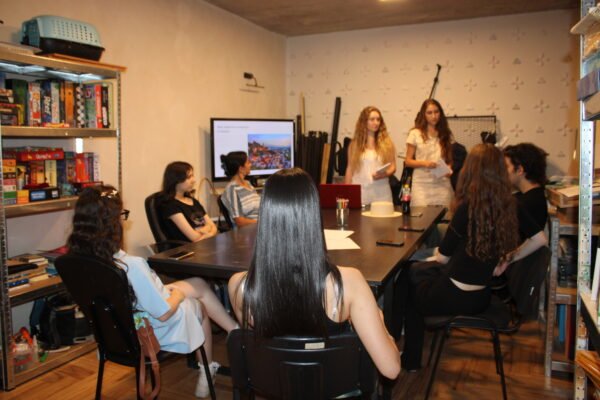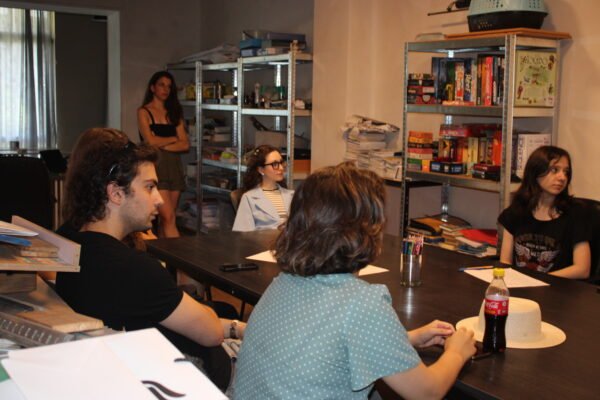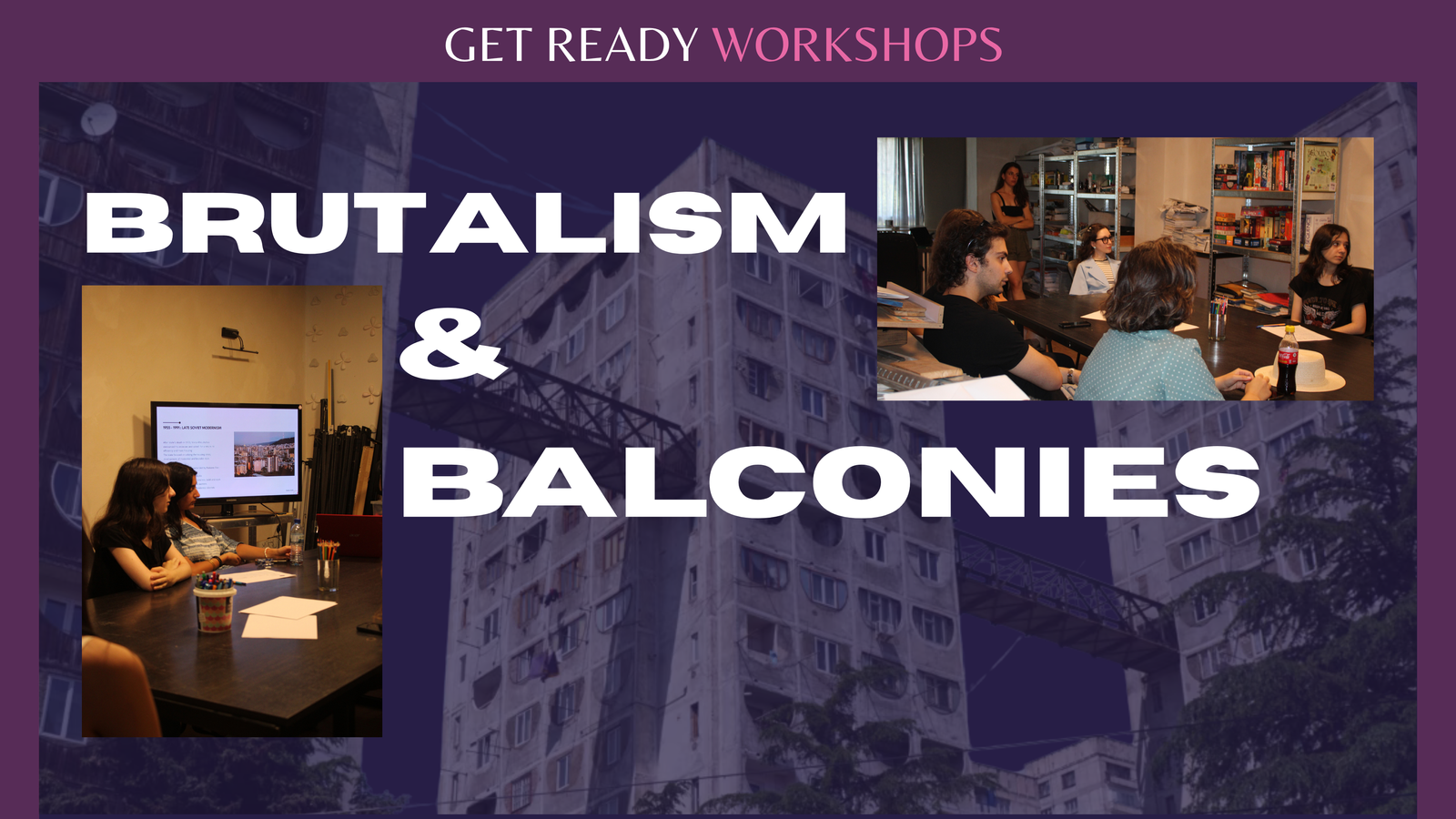On July 24th, DRONI members gathered for the « Balconies & Brutalism » workshop. We started with a conversation about architecture in Georgia, which is marked by the different eras and invasions the country has experienced. Georgia is particularly rich in architectural monuments, not only in its capital but also all around the country.

Members mentioned the Golden Age during the High Middle Ages (from the late 11th to the 13th centuries). During this time, the Kingdom of Georgia was considered to be at its most powerful, and this was also expressed through the arts, and also notably through architecture. For instance, the construction of the Svetitskhoveli Cathedral in Mtskheta by architect Arsukisdze, which is now a UNESCO World Heritage site, was built in 1010-1029.
Our conversation then jumped into the 20th century to talk about the interesting origins of Tbilisi’s balconies. Members also shared their concerns regarding those and the need to renovate the buildings, which are considered at risk.

After a quick overview of the different movements that shaped the Georgian architecture throughout the 20th century, such as Soviet architecture and its three main eras, namely avant-garde, socialist realism or Stalinism and late modernism. What makes Soviet architecture special is its brutalist style. Think buildings made out of concrete, sometimes of massive height, and often of intriguing shape. Members got to share their opinions (which are usually very strong) about those buildings and what they represent. What do they associate with this style? In Tbilisi, many tokens of this past can be found. None can deny the exceptionality of the Bank of Georgia building (or Ministry of Highways) or of the Technical University Station. The Khrushchyovkas also became a topic of their own, members deeming it necessary to come to their renovation.

On top of its strong Soviet legacy, the 21st century marked a new era for Tbilisi’s architecture. Since 2012, both Saakashvili and Ivanishvili have repeatedly attempted to mark the architectural landscape of the capital.

